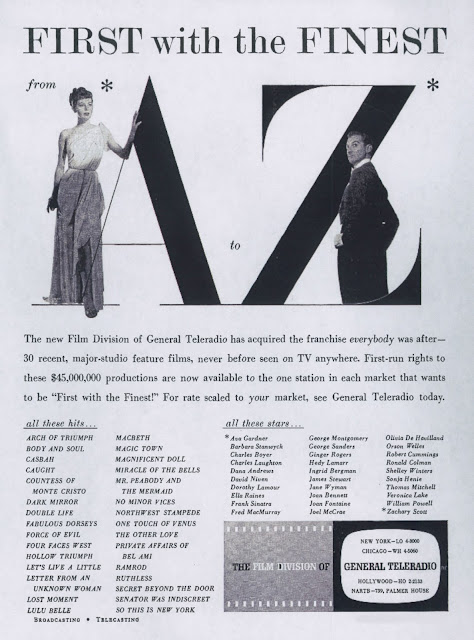 |
| June 1985: Imagine One Of Them Being Yours For $29.95! |
Part Two On Extinct Movies Being Here To Stay
One admitted difference, and a big one, is this: None of vintage bounty is free. Even TCM comes with a price in terms of basic cable or satellite required to get it. The streaming stuff involves a subscription or per-movie rental. You can crib features off You Tube or online elsewhere, but that presupposes you paid for Internet service and hardware/screens to view on. Truly vanished is TV as a free medium, unless you hang an antenna or still use rabbit ears to pull signals (would that even work? It's been so long since I tried). DVD's get mighty expensive when ones you must have are toted up. Before long, the house is filled to rafters and you've not looked at half. Good thing rats aren't lured by shiny discs or my digs would be infested.
Some will complain that too many titles remain unavailable. Outside of London After Midnight and
I don't get logic of my generation having it made forty years ago. Full disclosure obliges recall of pathetic handful of 8/16mm prints I schlepped along to group shows where too much light poured through shade-drawn windows. Picture yourself seated before Kino's Blu-Ray of Sherlock Jr., then imagine a classroom desk in 1972, and me unspooling an 8mm print to freshmen resolved never again to so inflict themselves. Of course, our standards were lower then. How else would I stay at it and be here today? But with current technology at hand, no one need settle for less than best (although again, it comes with costs). There's part of why I maintain more young people enjoy classics than ever before.
Go into many high school/colleges, large enrollment please, and there's a handful of at least occasional watchers, if not devotees. When I most recently did campus shows, and this was for a period between five and twelve years ago, there was steady and often capacity attendance. I made a point of showing not just boilerplate typicals like
I'm admittedly not in trenches of revival screening today. A lot of you are and thus have better perception of current reality. I just don't believe vintage pix are on any tracks out, more being at fingertips to watch than I'd see in ten lifetimes. I'm like Joe Besser in the plunging plane who says he can't die yet because he hasn't seen The Eddy Duchin Story. Well, don't lower my curtain yet, for I've not caught The Eddy Duchin Story in HD, even as I'm secure in knowledge it'll stream somewhere provided I live long enough. If old film is headed for tar pits, then book me for a same descent toward greater accessibility plus quality on constant upswing (what better evidence than Criterion's Safety Last?). Classics going extinct? I expect them to get nothing but better.

















































